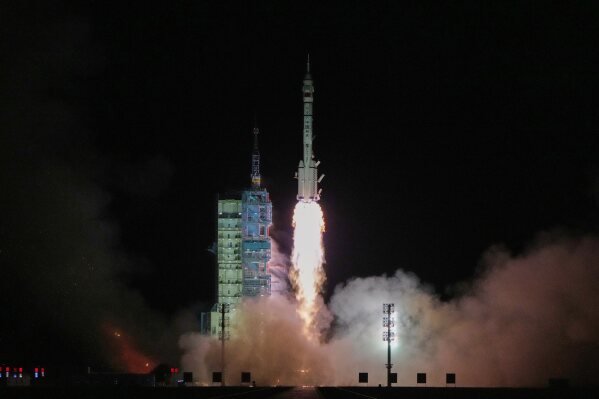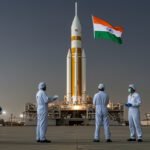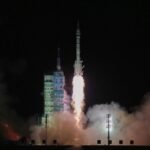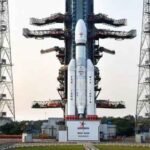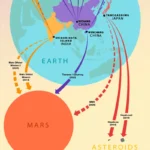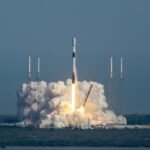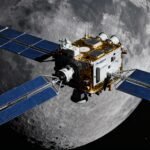The Shenzhou-21 launch isn’t just another milestone in China’s growing space program—it’s a bold declaration of ambition. Late on October 31, 2025, from the Jiuquan Satellite Launch Center, China successfully sent three astronauts into orbit aboard its Tiangong Space Station.
This mission, a blend of technological precision and human perseverance, symbolizes how far China’s space efforts have come—and how much further they plan to go.
As the Shenzhou-21 launch unfolded, global observers noted not only its flawless execution but also its deeper implications: continuity, innovation, and international competition in the new space race.
Crew and Mission Overview
At 11:44 p.m. Beijing time, the Long March 2F rocket lifted off carrying Shenzhou-21, with a seasoned and youthful crew ready for a six-month stay aboard Tiangong Station.
The crew includes:
- Zhang Lu (Commander) – Veteran of Shenzhou-15, experienced in orbital operations.
- Wu Fei (Flight Engineer) – Only 32 years old, China’s youngest astronaut in space to date.
- Zhang Hongzhang (Payload Specialist) – Making his first spaceflight, responsible for scientific payloads.
This trio represents the balance between experience and youthful innovation that China wants to nurture within its astronaut corps.
In a historic twist, they also carried four mice aboard for biological experiments—marking the first time small mammals accompanied Chinese astronauts to Tiangong. This demonstrates how China’s program now embraces the biological and medical sciences essential for future long-duration missions.
Table: Mission Snapshot
| Feature | Details |
|---|---|
| Mission Name | Shenzhou-21 |
| Launch Vehicle | Long March 2F/G |
| Launch Site | Jiuquan Satellite Launch Center, Gobi Desert |
| Launch Date | October 31, 2025 |
| Crew Members | Zhang Lu, Wu Fei, Zhang Hongzhang |
| Mission Duration | ~6 months |
| Destination | Tiangong Space Station |
| Highlights | Fast docking in 3.5 hours, live animal experiments, continuous crew rotation |
Why the Shenzhou-21 Launch Matters
The Shenzhou-21 launch represents a new phase in China’s quest for continuous human presence in orbit. It’s the tenth crewed mission and the seventh since the Tiangong Space Station’s completion in 2022.
1. Continuous Human Presence in Space
China’s goal mirrors the International Space Station’s legacy—ensuring the station is continuously occupied. This not only advances research but also strengthens operational reliability and routine maintenance.
2. Technological Confidence
With a record 3.5-hour docking time, the mission proved the growing precision and maturity of China’s space systems.
That speed signals a readiness for more ambitious objectives—such as future lunar and deep-space missions.
3. Youthful Expansion
Wu Fei’s participation as the youngest astronaut underscores China’s investment in cultivating new generations of taikonauts—a clear indication that its program is built for longevity.
Science, Research & Innovation
On board, the crew will perform over 30 scientific experiments covering life sciences, materials research, fluid physics, and biomedicine.
One of the most exciting aspects is the inclusion of biological experiments using live mice, offering insight into how mammals adapt to microgravity. According to reports from China Manned Space Agency (CMSA), these experiments will support preparations for future Mars missions.
Additionally, payload specialist Zhang Hongzhang will oversee new materials testing crucial for next-generation spacecraft hulls and radiation protection.
Shenzhou-21 and the Global Space Landscape
The Shenzhou-21 launch didn’t happen in isolation—it reflects the evolving global dynamics of space exploration.
Comparison: China vs. International Partners
| Country / Organization | Active Space Station | Crew Rotation Frequency | Key Focus |
|---|---|---|---|
| China (Tiangong) | Yes | Every 6 months | Science, biology, long-term habitation |
| USA / NASA (ISS) | Yes | Every 6 months | International collaboration, research |
| Russia | Yes (with ISS) | Joint missions | Propulsion, orbital maintenance |
| India (upcoming Gaganyaan) | Planned 2026 | TBD | Crewed LEO missions |
China’s consistency contrasts with others facing funding or policy constraints. With Shenzhou-21, Beijing is signaling: “We’re not just catching up—we’re leading our own path.”

Technological Innovations Driving the Mission
Behind the success of Shenzhou-21 lies decades of engineering progress.
- Long March 2F Evolution: The rocket’s reliability rate now exceeds 98%, making it one of the world’s safest human-rated systems.
- Tiangong Upgrades: Modular improvements allow flexible mission durations and power generation.
- Fast Rendezvous Algorithm: The new guidance system enabled the record docking time—vital for efficiency and crew safety.
- Advanced Life-Support Systems: With enhanced air recycling, water recovery, and food storage, missions of up to a year are within reach.
Such improvements indicate that China’s spacecraft design philosophy—reliability through iteration—is paying off.
Challenges and Risks
Even with success, the Shenzhou-21 launch faces typical spaceflight challenges:
- Radiation Exposure: Extended stays in low Earth orbit require ongoing monitoring and shield upgrades.
- Psychological Health: Continuous habitation demands strong mental well-being programs.
- International Collaboration Barriers: Exclusion from the ISS program limits scientific exchange.
- Budget Pressure: Expanding missions while maintaining affordability is an ongoing balancing act.
Still, overcoming these challenges will only strengthen China’s resolve and expertise.
Looking Ahead: Future of China’s Space Ambitions
Toward the Moon and Beyond
China plans to launch its first crewed lunar mission before 2030, building on the success of Shenzhou and Tiangong operations.
The Shenzhou-21 mission is therefore a stepping stone—testing the endurance, autonomy, and life-support systems necessary for interplanetary travel.
International Cooperation Potential
China has invited other nations to send experiments to Tiangong, similar to how the ISS operates. This may open a new era of collaborative research, despite existing geopolitical divides.
Broader Vision: Mars Exploration
By refining long-duration habitation and logistics, Shenzhou-21 lays the foundation for future Mars base missions, where experience with closed-loop ecosystems and crew health management will be crucial.

